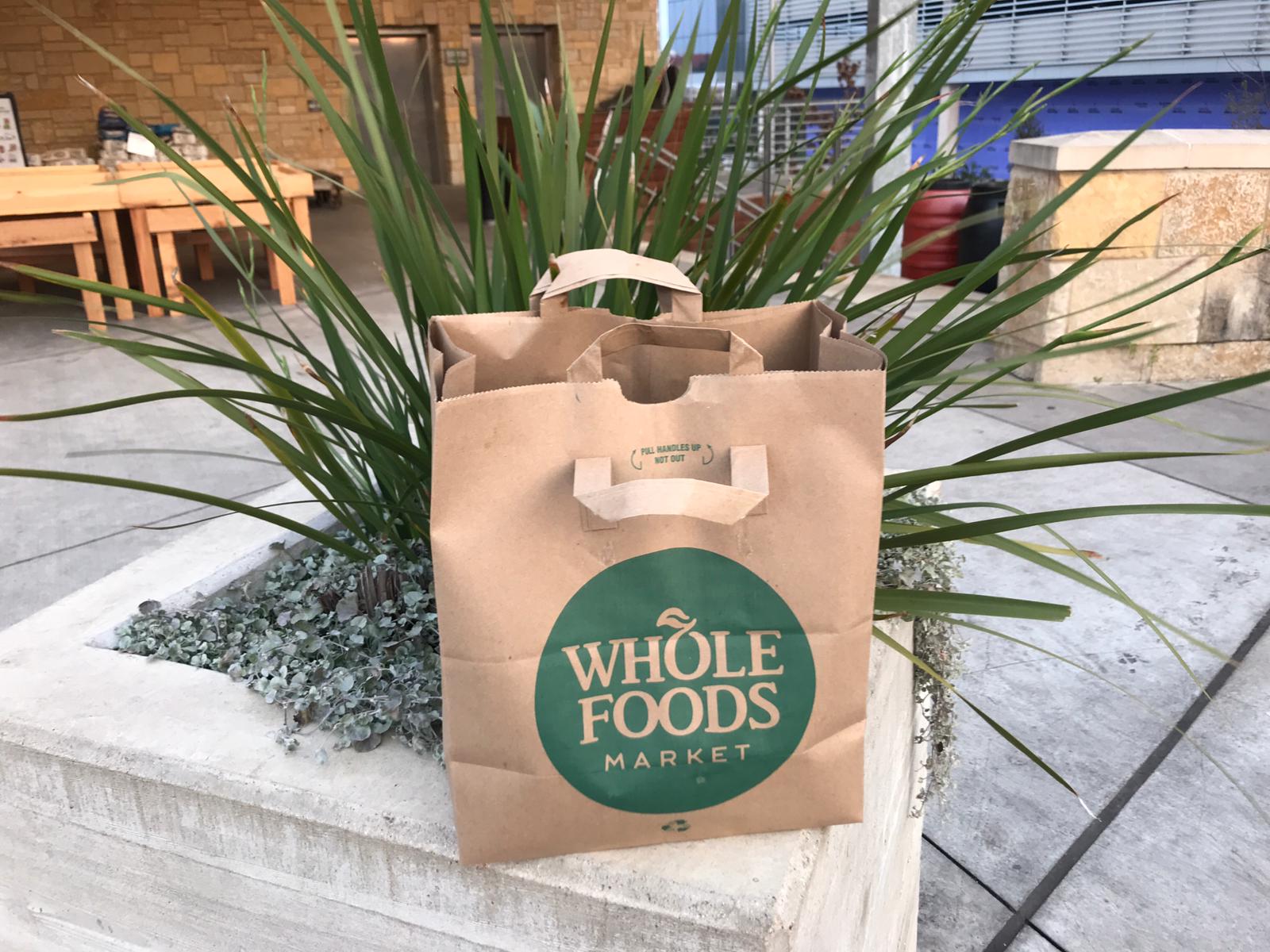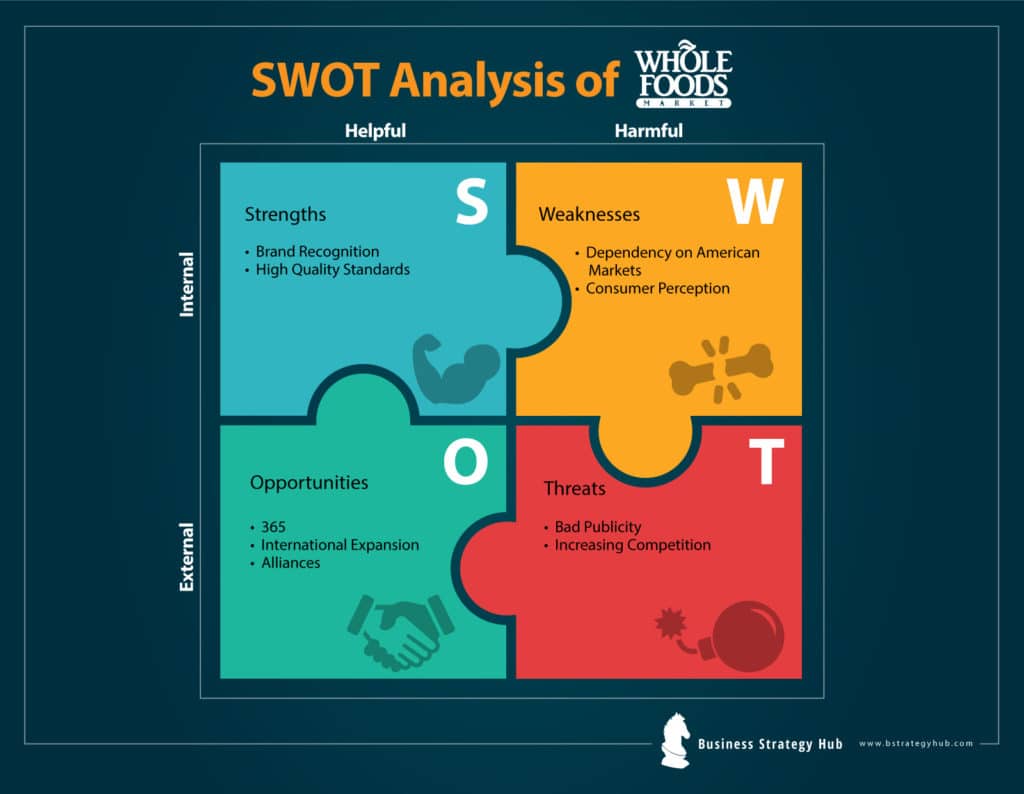Company: Whole Foods Market (a subsidiary of Amazon)
CEO : John Mackey
Year founded : 1980
Headquarter : Downtown Austin, USA
Number of Employees (2018): 91,000
Acquisition Cost (Aug 28, 2017): $13.2 Billion
Annual Revenue (2017) : $16.03 Billion
Profit |Net income (2017): $245 Million
Products & Services: Apparel | Supplements | Body Care | Lifestyle Items | Grocery | Seafood | Specialty Items | Produce | Prepared Foods | Meat
Competitors: Walmart | Trader’s Joe | Supervalu | Safeway | Target | Sprouts Farmer Market | Kroger | The Fresh Market
Fun Fact:
Did you that the first Whole Foods store was opened up in a house zoned for commercial use?
An Overview of Whole Foods
Whole Foods Market is the largest natural and organic foods supermarket in the United States. Its first store opened in September 1980 when the owners of SaferWay food store, John Mackey and Renee Lawson Hardy, formed an alliance with the owners of Clarksville Natural Grocery, Craig Weller and Mark Skiles.
For many food lovers, especially those who prefer organic and natural eatables, Whole Foods Market remains their biggest go to store. The company has a wide range of food and lifestyle items.
These include meat, vegetables, seafood, coffee, beer, wine, tea, cheese, vitamins, pet care, body care, household goods, and nutritional supplements.
It also specializes in producing vegan, dairy-free, non-GMO and other special dietary foods as well. It’s widely praised health recommended food production helped it to become the first national “Certified Organic” grocer in the USA. It continues to strive for excellence and deliver healthy food items to its consumers.
As of September 24, 2017, Whole Foods Market has been operating in approximately 470 stores in USA, United Kingdom, and Canada. To have a competitive edge the company has starting offering their products online as well.
SWOT Analysis of Whole Foods
The Whole Foods SWOT analysis is given below:
Whole Foods’ Strengths
- Brand Recognition – A company’s future can only be determined by its brand image. Customers generally opt for companies with high brand recognition. Moreover, Whole Foods enjoys a solid brand reputation since its inception. It came on the 3rd spot on the Reputation Institute’s 2015 most trusted retail company annual survey. It enables Whole Foods to stand out from the rest of its competition and in turn convert that popularity by attracting an ever-growing customer base. The profits, volume, and sales generated by that consumer demographics have secured the supermarket’s future.
- High-Quality Standards – Quality is the selling point of a product. Whole Foods has made its motto to provide the highest quality standard food products in its stores. It has enabled the Whole Foods to expand its consumer base. Whole Foods has set the bar high by banning ingredients commonly present in the products of other food retailers. Artificial flavors, sweeteners, colors, and hydrogenated fats are prohibited. The company also forbids any form of fishing, farming, or ranching activities that do not meet its high standards. The boom in business has given the company leverage to increase some of its prices. Its target demographic comes from a well-educated and more upper-middle-class background who are willing to pay more to ensure good quality of food.
Whole Foods’ Weaknesses
- Dependency on American Markets – Whole Foods is at its most vulnerable because of its dependence on the American markets. It accumulated a whopping 97% of total revenues in the US market in 2015. It does not offer sustainability if the American economy collapses due to the unpredictability of the global economy. The company already dealt with lower profits during the recession. A hit from another incoming recession might cause irreparable damage to its interests. It has only limited itself to Canada and the UK as far as its International branches are concerned.
- Consumer Perception – Wholesales experienced low sales growth due to overpricing and overcharging its consumers. This has led to many backlashes. The widely held consumer perception is that the company deliberately presents them with products that are expensive. It has been given the title of “Whole Paycheck” owing to the belief that the prices can take up the consumer’s entire salary. It has weakened the brand’s image.
Whole Foods’ Opportunities
- Diversification (365 Stores) – To tackle the issue of expensive items, Whole Foods has launched a new low price market in the form of 365 by Whole Foods Market. The new company focuses on bringing healthy and affordable food to people regularly. 365 by Whole Foods Market was created to cater to the middle class and millennials with organic food choices. The stores are relatively smaller than the original superstores. However, they are still complementary products. Whole Foods establishment was accused of overpricing for years, and they have invested a lot in this branch to address those concerns.
- International Expansion – Whole Foods overreliance on the US markets is already well-known. It gives the company room to diversify its operational resources and pursue International Expansion. It already has functioning branches in Canada and the UK which it needs to invest more into for further expansion. It also needs to target Europe and Asia as a potential booster for its revenue. Although it is still an internal matter of discussion, the margin of growth can still be attained if it follows through on the strategy.
- Alliances – Amazon announced that it would purchase Whole Foods and make its products available on its sites. The deal was closed on August 28, 2017. This historic acquisition has led to massive success for the company in terms of revenue growth and an increase in employee participation.
Whole Foods’ Threats
- Bad Publicity – The company has faced severe media backlash and negative publicity because of the way it handled its 2015 customer overcharging It resulted in a large number of complaints against the organization. The company was hit with a lawsuit that eventually reached a settlement of 500K in compensation. Since then, its sales growth have declined and drawn bad publicity.
- Increasing Competition – Despite Amazon buying off Whole Foods, the company has not managed to prevent competition from its major competitors like Walmart which is planning to overtake the company in 2018. Whole Foods continues to face intense competition; even Target has given it a run for its money. Both Walmart and Target utilize competitive pricing as a means to outperform Whole Foods which has been ineffective so far.
Conclusion
The above Whole Foods SWOT analysis gives a detailed insight into the company’s capabilities and operations.
Whole Foods is still managing to sustain its clientele and profits and will continue to do so for the years to come. It has done well to tackle the allegations of overpricing by opening its new 365 chains. It simply needs to take the plunge worldwide and invest in the international markets.
The most important thing the company needs to invest in is in communications. Every company experiences ups and downs, but a bad relationship with the press and damage control is what hurts businesses. The company must get a better handle in its PR management, and it will be good to go.













Add comment